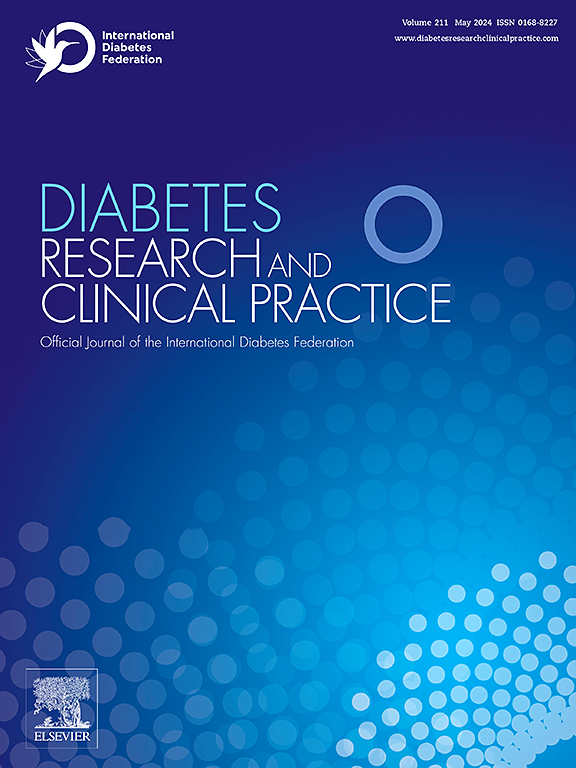COVID-19 期间心血管-肾脏-代谢综合征患病率增加:倾向得分匹配研究
IF 6.1
3区 医学
Q1 ENDOCRINOLOGY & METABOLISM
引用次数: 0
摘要
美国心脏病学会(AHA)最近发布的一项主席建议引入了心血管-肾脏-代谢综合征(CKM)这一术语,以描述这些健康状况之间复杂的相互作用。我们的研究旨在比较 COVID-19 大流行之前和期间 CKM 综合征并发症的患病率,并确定相关的风险因素。我们利用从初级保健数据库中获得的真实人群数据开展了一项研究。研究队列由一个封闭群体组成,随访时间为 6 年(2017-2022 年)。共纳入 81051 人:大流行前为 32,650 人,2020-2022 三年期为 48,401 人。在对性别、年龄和体重指数进行倾向分数匹配后,研究在每个时期纳入了 30511 人。在大流行前,共有 3554 人被诊断为 2 型糖尿病(T2D),而在大流行期间则有 7430 人。在大流行期间,高血压、血脂异常和肥胖症的发病率显著上升,糖尿病前期的发病率尤其急剧上升了 170%。年龄分层分析显示,随着年龄的增长,慢性肾脏疾病的发病率也在增加。我们的研究结果表明,在 COVID-19 大流行期间,CKM 综合征的患病率大幅上升,近一半的患者表现出一种或多种 CKM 综合征。本文章由计算机程序翻译,如有差异,请以英文原文为准。
Increased prevalence of cardiovascular-kidney-metabolic syndrome during COVID-19: A propensity score-matched study
A recent presidential advisory from the American Heart Association (AHA) has introduced the term cardiovascular-kidney-metabolic (CKM) syndrome to describe the complex interplay among health conditions linking heart, kidney, and metabolism. The aim of our study was to compare the prevalence of concurrent CKM syndrome components before and during the COVID-19 pandemic and identify associated risk factors. We conducted a study utilizing data from a real-world population obtained from a primary care database. The study cohort comprised a closed group followed over a 6-year period (2017–2022). A total of 81,051 individuals were included: 32,650 in the pre-pandemic period and 48,401 in the 2020–2022 triennium. After propensity-score matching for sex, age, and BMI, the study included 30,511 participants for each period. 3554 individuals were diagnosed with type 2 diabetes in the pre-pandemic period, compared to 7430 during the pandemic. Hypertension, dyslipidemia, and obesity displayed significant increases in prevalence during the pandemic, and prediabetes had a particularly sharp rise of 170%. Age-stratified analyses revealed a higher burden of CKM conditions with advancing age. Our findings indicate a substantial increase in the prevalence of CKM syndrome during the COVID-19 pandemic, with nearly half of the patients exhibiting one or more CKM syndrome components.
求助全文
通过发布文献求助,成功后即可免费获取论文全文。
去求助
来源期刊

Diabetes research and clinical practice
医学-内分泌学与代谢
CiteScore
10.30
自引率
3.90%
发文量
862
审稿时长
32 days
期刊介绍:
Diabetes Research and Clinical Practice is an international journal for health-care providers and clinically oriented researchers that publishes high-quality original research articles and expert reviews in diabetes and related areas. The role of the journal is to provide a venue for dissemination of knowledge and discussion of topics related to diabetes clinical research and patient care. Topics of focus include translational science, genetics, immunology, nutrition, psychosocial research, epidemiology, prevention, socio-economic research, complications, new treatments, technologies and therapy.
 求助内容:
求助内容: 应助结果提醒方式:
应助结果提醒方式:


